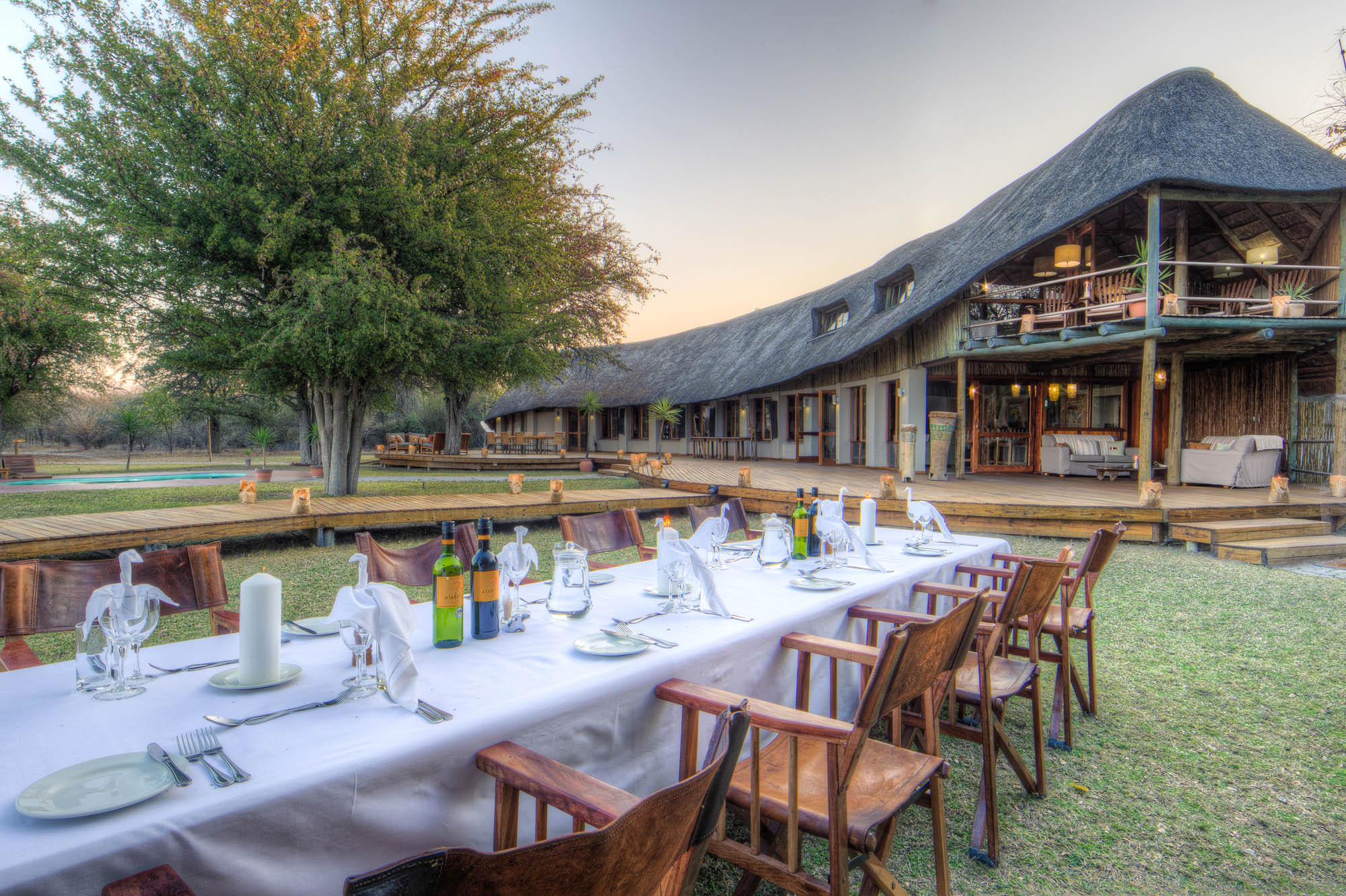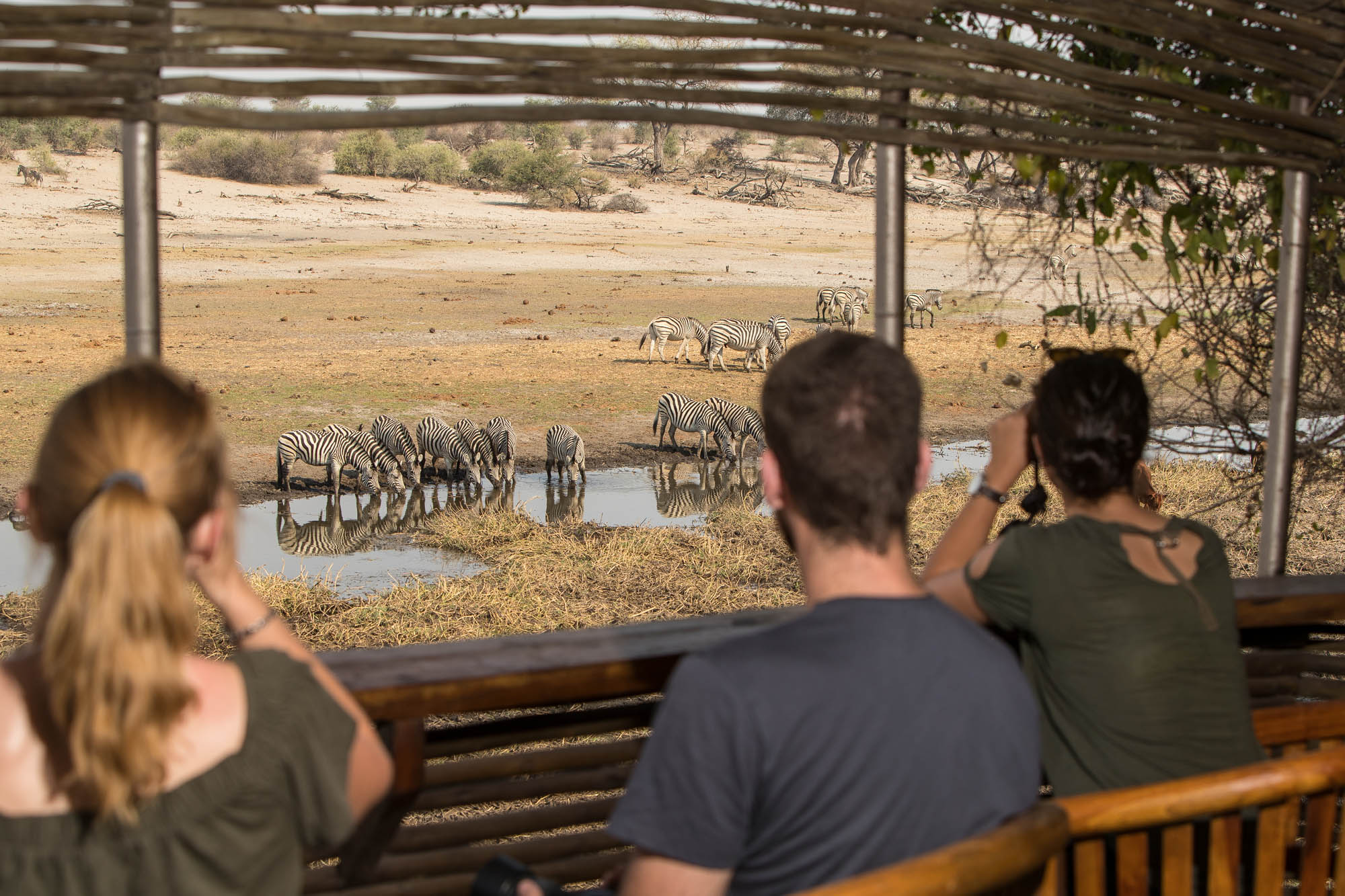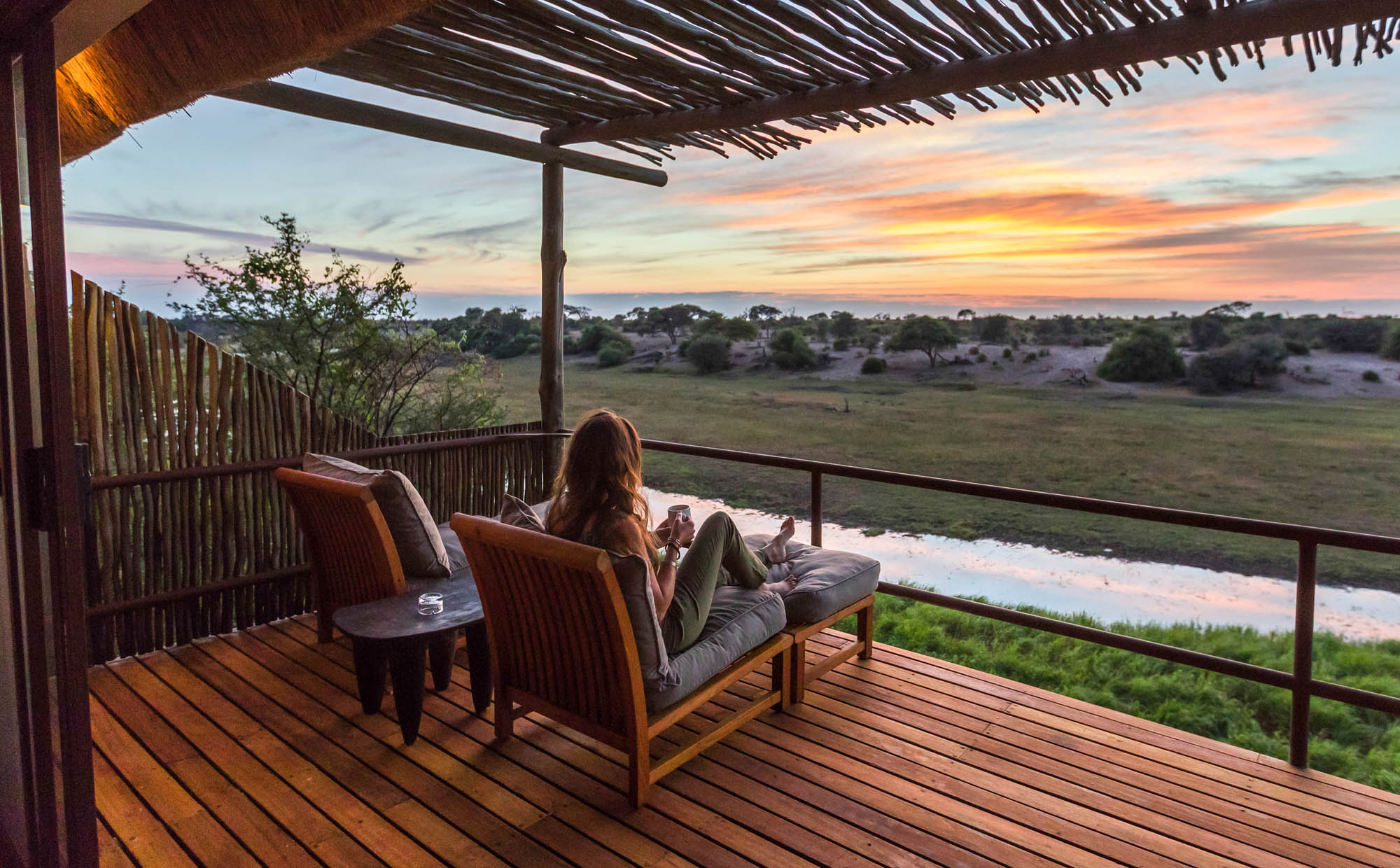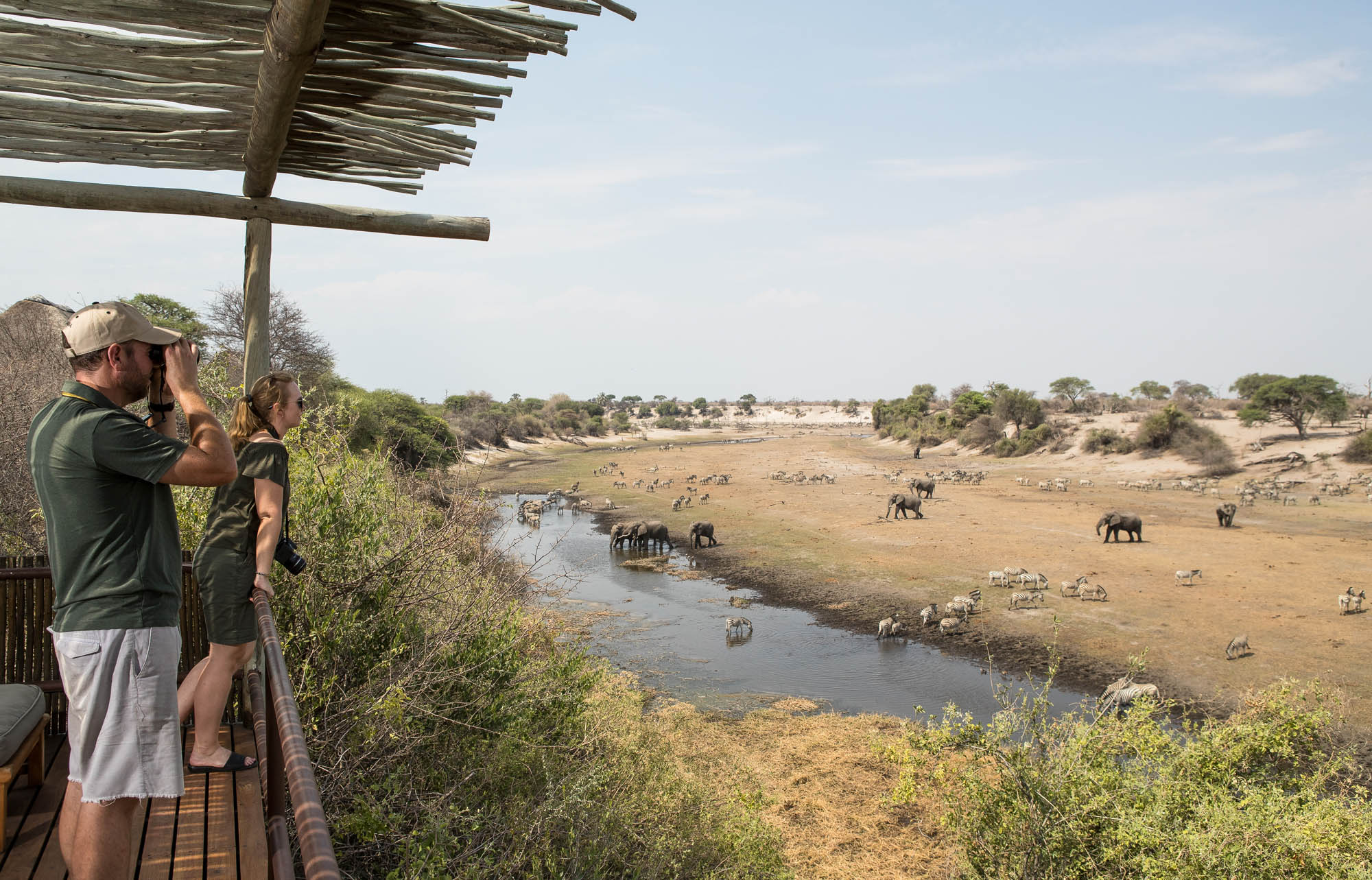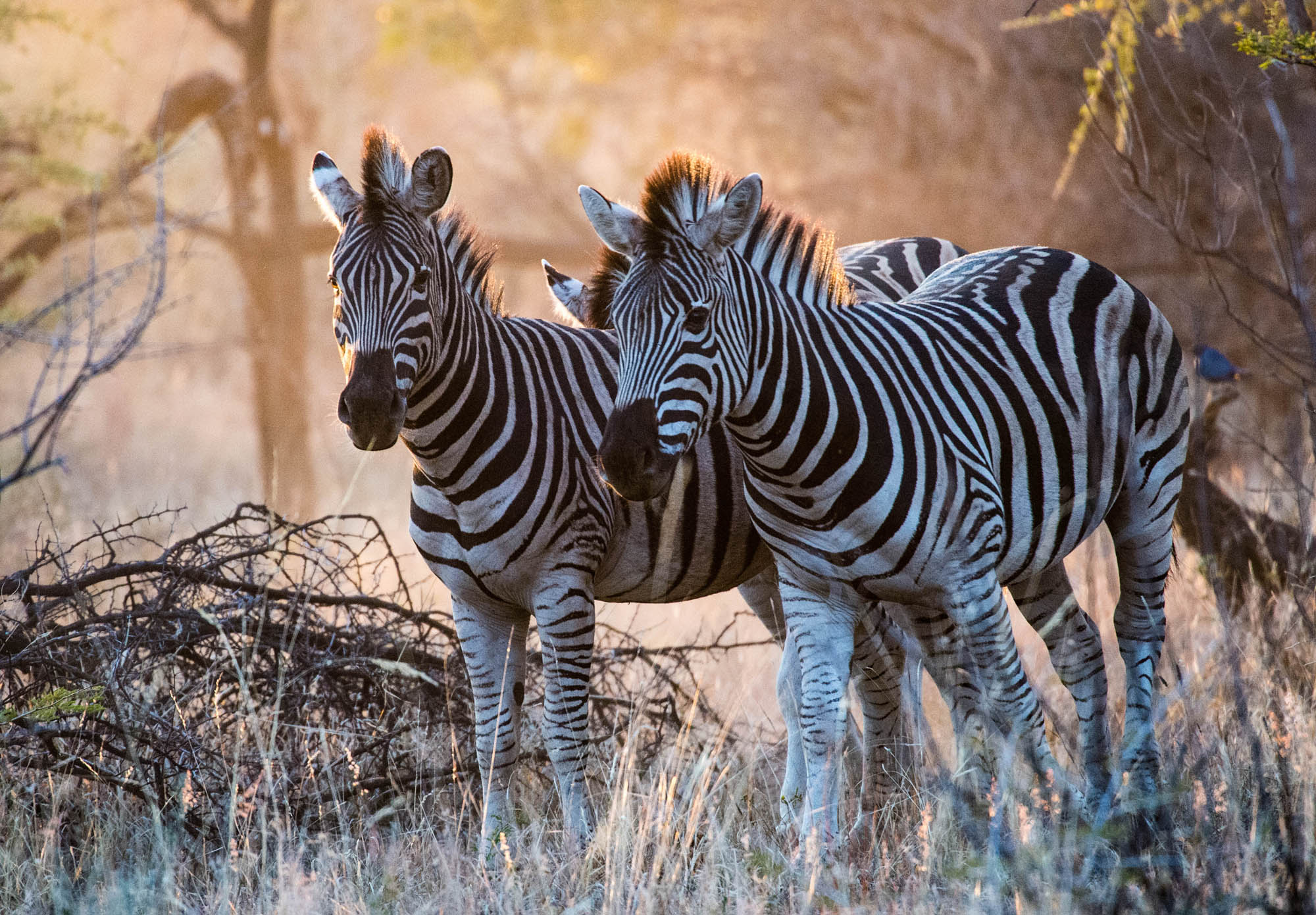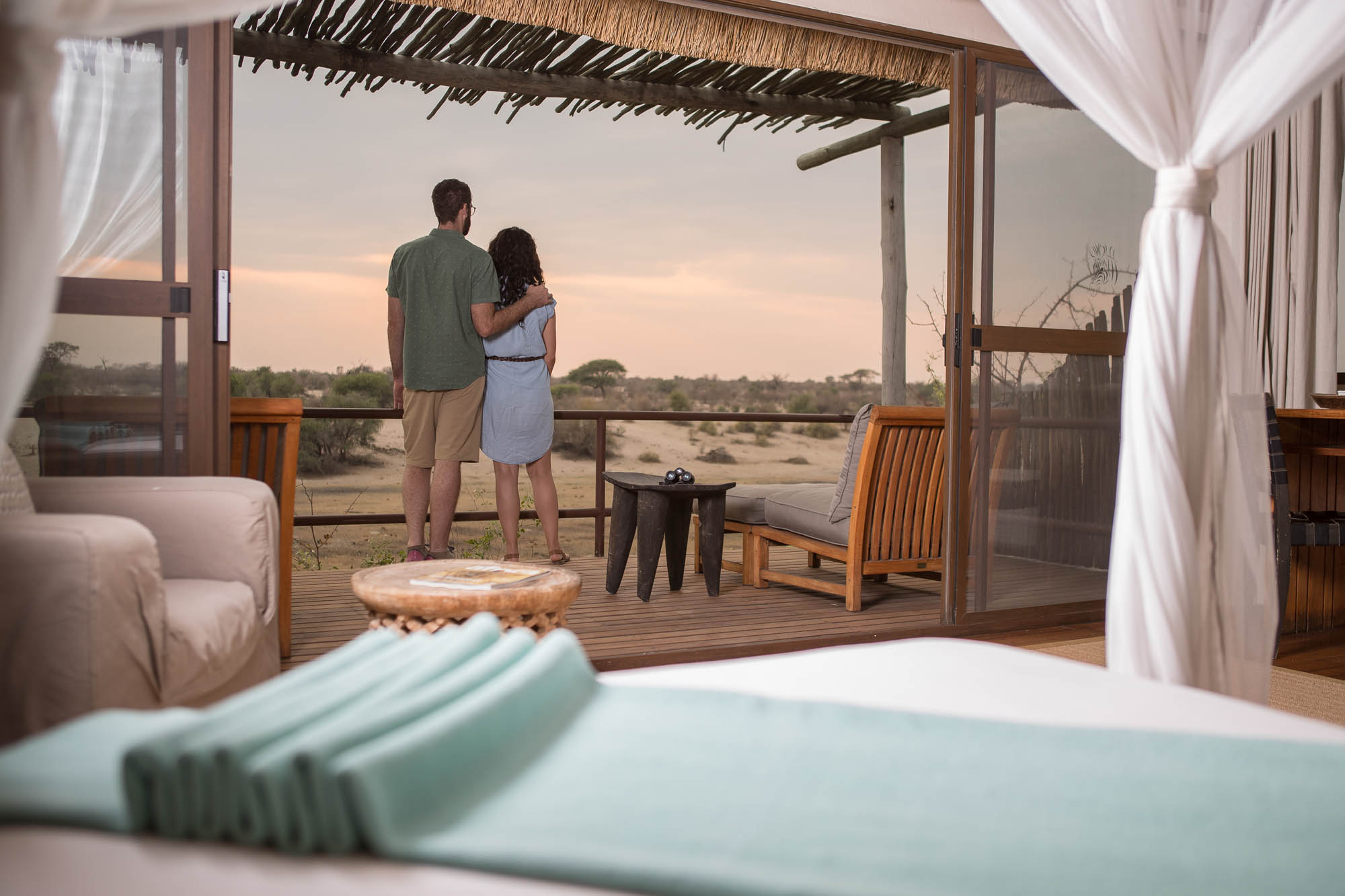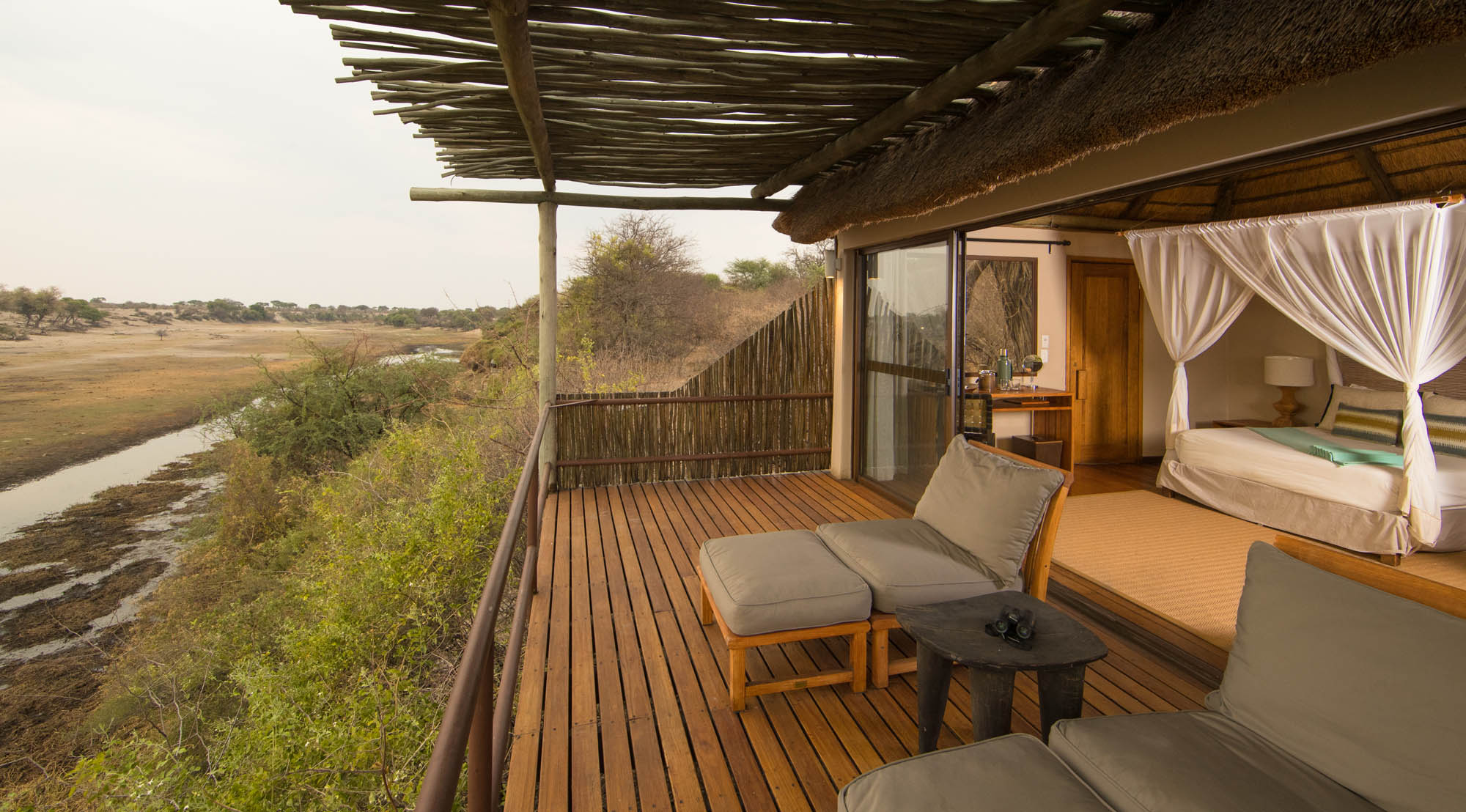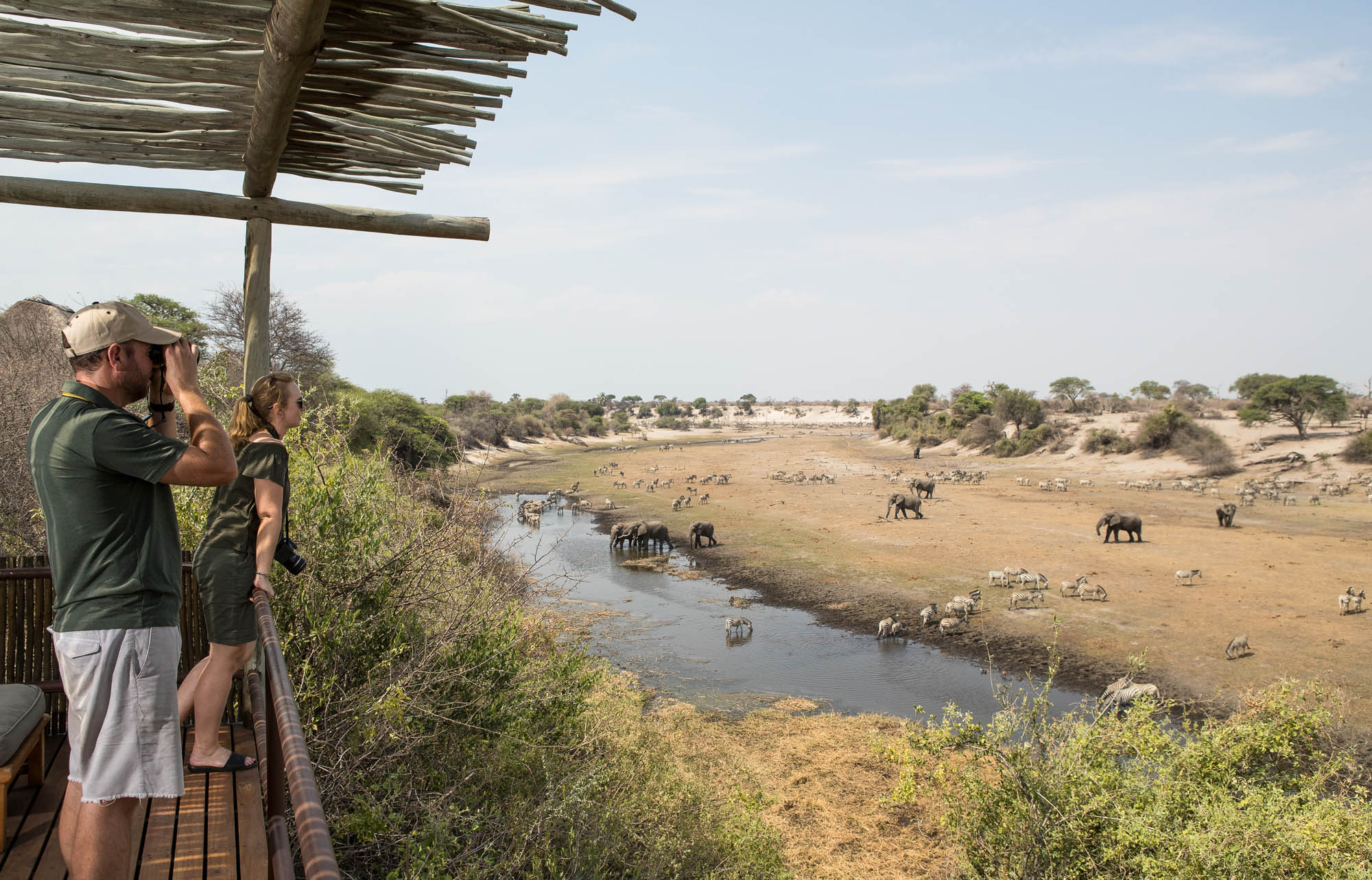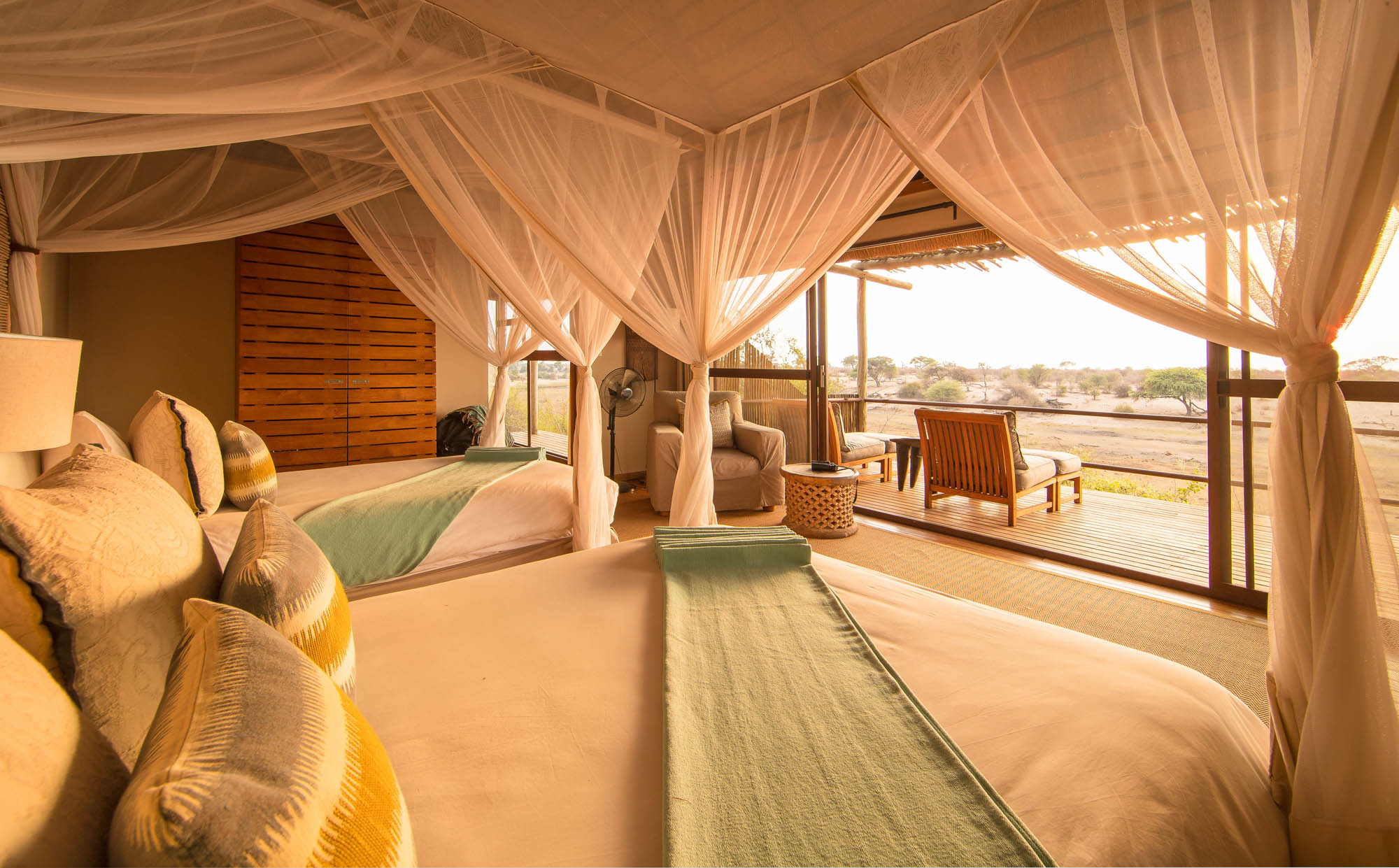Leroo La Tau and the Botswana Zebra Migration
Photo by Desert & Delta Safaris
Leroo La Tau and the Botswana Zebra Migration
Ask any African wildlife photographer about their favorite animal to photograph and you might be surprised to see how high zebras rank. These peculiar white and black striped mammals are among the most recognizable and most photographed of African animals. Get a few of them together in the same frame, add some action and maybe some dust for added drama – and let the fun begin.
Photo by Desert & Delta Safaris
Few places in Africa are quite as well located as Leroo La Tau in central Botswana, to realize one’s ultimate zebra photography scenario. The appeal of this Kalahari camp is closely intertwined with the enigmatic Boteti River which flows right below the camp. As many as 30,000 zebras annually migrate between the Makgadikgadi Pans and the Okavango Delta, many passing through this area. In the dry season from about June through November the Boteti is one of the only permanent water sources on their way, and acts like a magnet for thirsty zebras.
Photo by Desert & Delta Safaris
Leroo La Tau is built on cliffs some thirty feet above the banks of the Boteti, offering a vantage point over the river and the Makgadikgadi Pans to the east. The best place in camp to make the most of the zebra migration – and to capture photographs of all the other animals and birds attracted to the water – is the camp’s enclosed hide, from where you have an eye-level view across the Boteti. A bunch of zebras all lining up to drink at the same time, two young stallions standing up on their hind legs, biting and kicking – the photo opportunities come hard and fast.
Photo by Desert & Delta Safaris
The Boteti River is the main outflow of the Okavango Delta, collecting the water that flows past Maun and from there it meanders about 150 miles to Lake Xau on the extreme south-western edge of the great Makgadikgadi salt pans. While it is currently flowing, that wasn’t always the case. For a period of about 20 years, ending in 2009, the Boteti had largely dried up, with just a few waterholes in the riverbed which offered refuge to a small pod of landlocked hippos, together with some crocodiles which became completely terrestrial, making dens in riverbank ‘caves’ downriver from the lodge.
For now, the river again provides a lifeline for the wide range of wildlife which inhabit the arid Makgadikgadi national park and is a critical link in the spectacular zebra migration. From December through March – essentially the wet months in the Kalahari – the zebras seek out the nutritious grasses surrounding the Makgadikgadi Pans. During this time there is a shallow layer of water over the salt pans, which attract a large number of migrating birds such as flamingoes. All the more reason to spend some time around the pans then.
Photo by Desert & Delta Safaris
Around March or so – depending on the timing of the rain – the zebras edge towards the western edge of Makgadikgadi Pans National Park before setting off towards the Okavango Delta and Moremi Game Reserve. Their next stop: the Boteti – and Leroo La Tau.
On our most recent visit in July, we reached the camp after a flight of about 40 minutes (just slightly longer than the average Botswana light air transfer), followed by a 20-minute drive from the airstrip to the camp.
Photo by Desert & Delta Safaris
We found the main area to be very appealing. It is two stories high and has a well-placed fire pit right on the river. The lodge features twelve luxurious thatched and glass-fronted suites with en-suite bathrooms, each unit raised on a wooden platform overlooking the Boteti River Valley below. The rooms are well spread out, spacious and have killer views over the river. The main lounge and dining area, with its inviting wooden and thatch finish, is a great spot to spend some time relaxing at the bar or enjoying the excellent food offerings. Alternatively you can lounge around the swimming pool or enjoy the views from the game-viewing hide built into the bank of the river.
On a previous trip, we visited Leroo La Tau during the ‘Green Season’ which runs from December to March, when game-viewing isn’t quite as productive as it is during the dry months. Even so, we enjoyed some good sightings of kudu, lion and elephant, amongst others. In fact, we had some great views of a black-maned Kalahari lion in his prime.
Photo by Desert & Delta Safaris
After dinner at Leroo La Tau on that visit, members of the staff entertained guests with a singing and dancing performance. This does not happen every night, so we were quite pleased to be treated to several traditional songs, done in a sweetly harmonious fashion. I think we were all struck by the wonderful attitude of the staff at this camp, everybody smiling all the time!
Prospective visitors would do well to schedule three nights here, and to take a full day trip (with picnic lunch) to Nxai Pan, among others to check out the beautiful Baines’ Baobabs site. The excursion starts in the early morning with a picnic lunch to be enjoyed while out exploring the salt pans.
Legendary Lodge
Photo by Desert & Delta Safaris
In addition to game drives – and depending on the water level – boating trips on the Boteti are also provided. Optional cultural excursions can be arranged to Khumaga Village as well as the previously mentioned day trips to Nxai Pan and Baines Baobabs (for guests staying a minimum of three nights). For those looking for a truly unique experience, the camp can arrange a sleep out under the stars on the Makgadikgadi Salt Pans.


